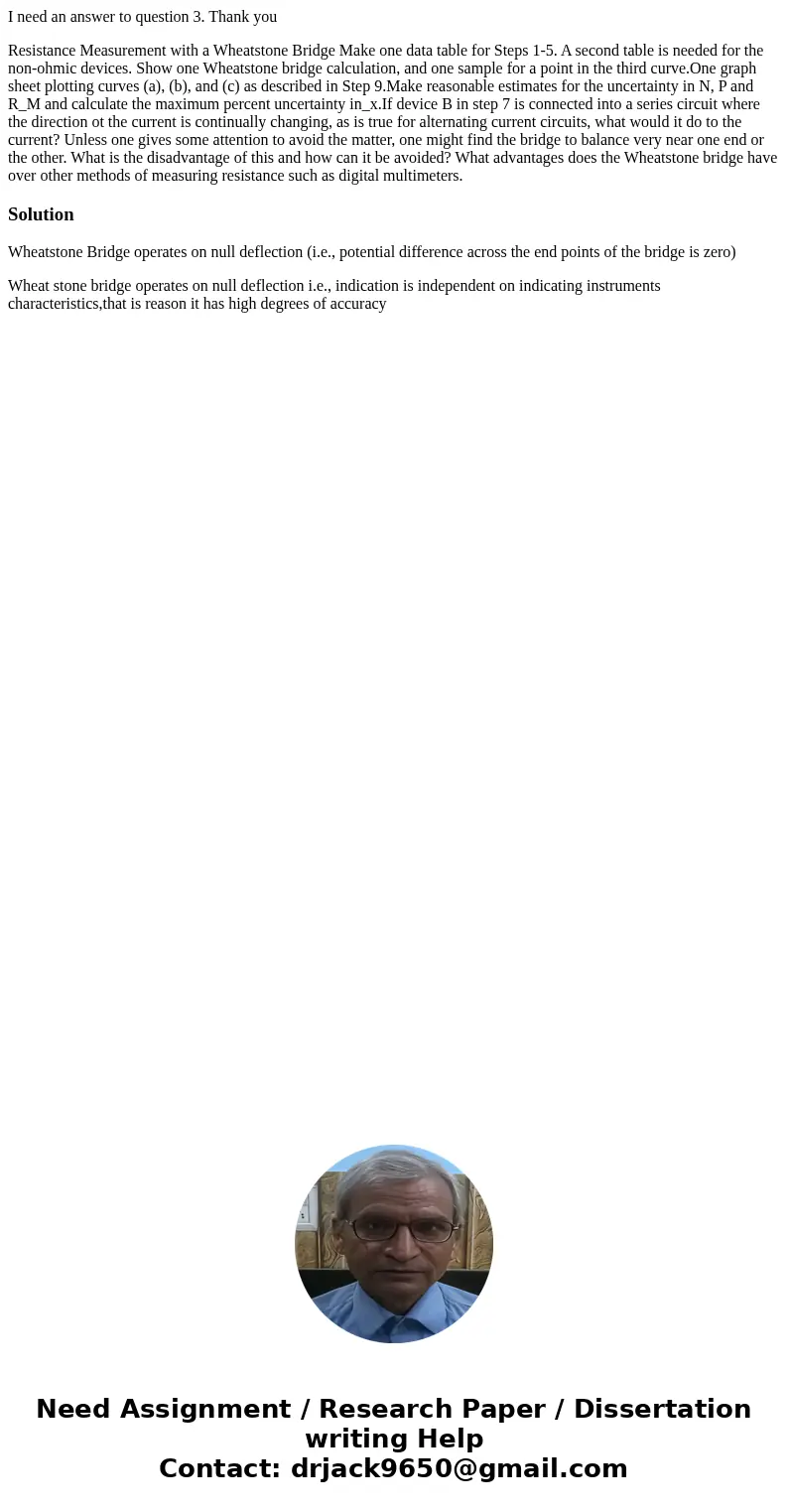I need an answer to question 3 Thank you Resistance Measurem
I need an answer to question 3. Thank you
Resistance Measurement with a Wheatstone Bridge Make one data table for Steps 1-5. A second table is needed for the non-ohmic devices. Show one Wheatstone bridge calculation, and one sample for a point in the third curve.One graph sheet plotting curves (a), (b), and (c) as described in Step 9.Make reasonable estimates for the uncertainty in N, P and R_M and calculate the maximum percent uncertainty in_x.If device B in step 7 is connected into a series circuit where the direction ot the current is continually changing, as is true for alternating current circuits, what would it do to the current? Unless one gives some attention to avoid the matter, one might find the bridge to balance very near one end or the other. What is the disadvantage of this and how can it be avoided? What advantages does the Wheatstone bridge have over other methods of measuring resistance such as digital multimeters.Solution
Wheatstone Bridge operates on null deflection (i.e., potential difference across the end points of the bridge is zero)
Wheat stone bridge operates on null deflection i.e., indication is independent on indicating instruments characteristics,that is reason it has high degrees of accuracy

 Homework Sourse
Homework Sourse